Natural Soap Making For Beginners: Ingredients
Natural Soap Making for Beginners: an introduction to natural soap making ingredients including oils, butters, lye, essential oils, & natural colorWe begin the process of natural soap making by learning about the ingredients you’ll use. Oils, butters, essential oils, botanicals, and of course lye. The series continues with an introduction to the equipment you need and soap making safety, a few basic recipes, how to formulate your own recipes, and finally a piece showing how to make handmade soap using the cold-process method. This is a free soapmaking series but I also include everything in the series plus a whole lot more in my new 68-page ebook, the Lovely Greens Guide to Natural Soapmaking. I’ve had a lot of people ask me about creating one over the years so have finally made it available.
Natural Soap Making for Beginners Series
Contents
An introduction to natural soap making ingredients
How I learned how to make Soap
Through trial and error, a lot of time spent scouring the internet and books, and quite a few unsuccessful batches, I now have a successful process and a great range of products. Most of my soap is now destined for shops around the Isle of Man and for direct sale. Some of it is used at home in the bath, kitchen, and even laundry. I now love sharing tips on how to make natural soap and created this series to show you how too.Reading: how to scent soap naturally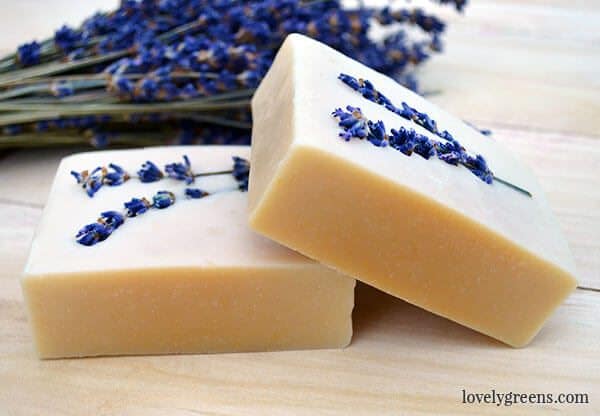
What is ‘Natural’ Soap?
For me, making natural soap means avoiding the use of any ingredients that could be toxic or are manufactured in ways that use questionable substances or methods. This means that I personally don’t use artificial dyes, perfumes, or additives in my soap.Some people might want to try to make soap for fun and aren’t too fussed about using all-natural. However, if you’re going to go to the effort of making handmade soap why not make a product that is going to be completely safe for you, your loved ones, and the environment?Things that a natural soap maker would avoid include fragrance oils, dyes, glitter, and plastic embeds. I’d even go so far as to say plastic packaging for selling soap too.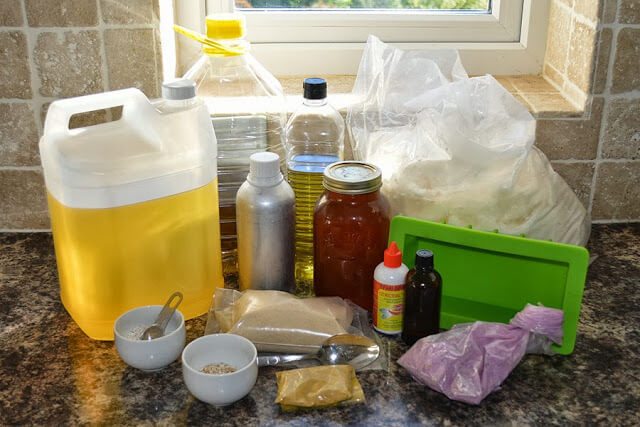
What is soap made from?
Most people ask me how to make soap but maybe the first question that should be asked is ‘what is soap’? At the heart of all soap recipes are two main ingredients: oil and lye, also known by its chemical name sodium hydroxide. Your soap making recipe will, through a simple but controlled process, chemically bond these two ingredients into a new compound – Soap!I’ll go through the process in a later post but let’s first look at your ingredients. The below is only meant as an introduction to your options and each section could be expanded upon with enough information to literally fill books. If you’re looking for places to find soap making inspiration please sign up for my free newsletter — I send out new ideas and recipes every two weeks.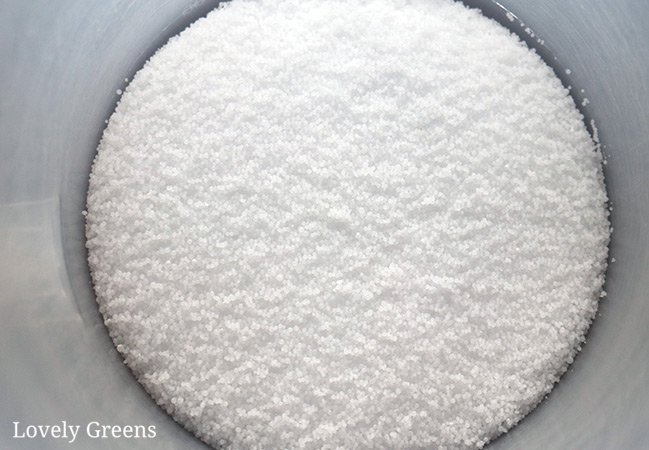
Lye / Sodium hydroxide
Right, let’s talk lye. I’d like to start off by stating that you absolutely cannot make your own soap without lye. A lot of people shy away from making soap due to experience with the harsh lye soap they remember a family member making in the past. It could also be because the thought of putting caustic soda into personal care products scares or puts them off. As I shared above, soap making is essentially the chemical reaction between oils and lye, which in cold-process soap making is sodium hydroxide. Together and through the wonder of chemistry, they will form a completely new compound — soap.If you’d like to make soap but are still feeling a bit unsure about handling Sodium Hydroxide then I’d suggest that you look into purchasing ‘Melt-and-Pour’ soap. It’s pre-made soap that you melt, add extra ingredients and scent, and then pour into molds. It’s been made with lye but that step is complete so you don’t have to handle it.
Distilled water
Read more: How long does ice take to freezeYou use distilled water in soap making to activate the lye and disperse it through the oils. Most of this water evaporates out of your bars during the curing process. That means that your finished bars might be slightly smaller than when you first took them out of their molds. You avoid using tap water, or spring water, in soap making as it can have minerals and impurities that impact the quality and shelf-life of your soap.As a beginner, use the water amount shown in the soap recipe you’re about to use. This will usually be formulated to give you a 33-38% lye concentration. As you get more experienced you can water discount your soap batches but I don’t recommend you do this at first. Trace time can speed up and the shade of the soap may differ from what you expect.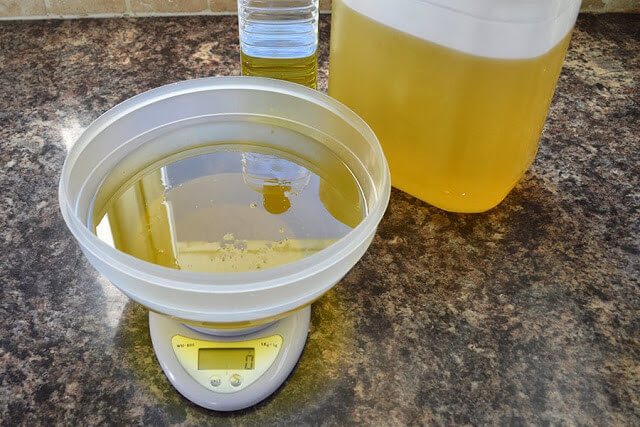
Oils & Fats
You can use any oil or fat to make soap. Most soap recipes include 3-6 oils but some have a lot more, or less. Soaps made from a single oil, such as Castile (olive oil) soap are uncommon because very few single oils make good soap. Different oils give different properties to soap including hardness, lather, creaminess, and conditioning.Most soap recipes are also super-fatted. This means adding extra oils at the very end of the soap making process that will be free-floating in your bars. These extra oils don’t combine with lye and make the difference between a bar of soap that’s cleansing and a bar of soap that’s cleansing and moisturizing.If you’re a beginner, please stick to using tried and tested recipes, especially ones that you know will be simple and have a high success rate. If you do need to change a soap recipe or if you’d like to understand more about oils, fatty acid profiles, and advanced soap recipe customization, head over here.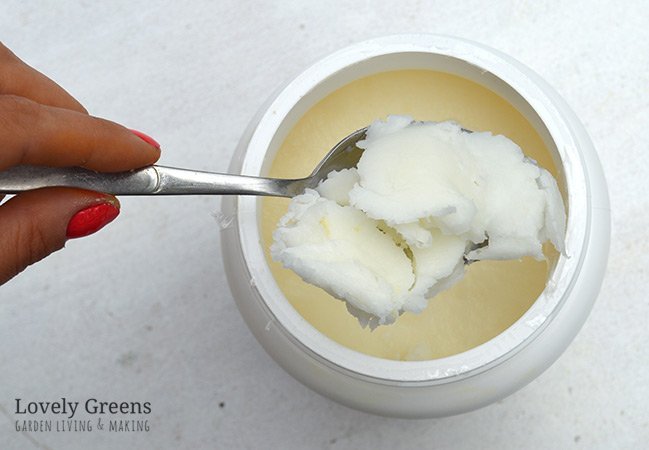
Common oils, fats, and butters used in soap making
- Babassu oil is used in place of coconut oil and palm oil in a recipe, though it does have a different SAP, so it’s not a direct replacement. It’s used as up to 33% of a soap recipe and helps creates a hard and cleansing soap.
- Beeswax is vegetarian but not vegan, and will add hardness to your soap and a soft scent. Use only small amounts ( 1-2% of the total base oils) of beeswax in your recipes since it stops soap from lathering when used at larger quantities.
- Canola (Rapeseed) oil is inexpensive and can make up 40% of the base oils in a soap recipe. It creates decent lather and hardness but is otherwise not particularly remarkable.
- Castor oil is a thick liquid oil that creates gorgeous lather in soap recipes—typically used at around 5% of soap recipes since more can cause soap to be too soft or sticky.
- Cocoa butter provides gorgeous moisture and skin protection and also helps to harden your soap. Use in smaller percentages of up to 15% of base oils or as a superfatting oil.
- Coconut oil is used in most soap recipes and helps create a hard bar with loads of fluffy lather and cleansing power. Recipes tend to include 25% or less of coconut oil, and unless otherwise stated, you use solid refined coconut oil that melts at 76F. Liquid (fractionated) coconut oil has different properties and a different SAP. Virgin coconut oil, the expensive stuff from the supermarket that tastes and smells so lovely, isn’t used very much in soap making. The coconut scent does not carry through to the bars, and it is also much more expensive. Best to save it for delicious coconut food recipes and other skincare.
- Grapeseed oil has many of the same properties as sunflower oil in soap. It creates creamy and conditioning lather and can be used as up to 15% of a recipe.
- Mango butter is used mainly as a superfatting oil but can be used as up to 15% of a recipe. A bit more expensive than the other oils and butters here, mango butter melts quickly and adds non-greasy conditioning properties to your bars.
- Neem oil is often a thick and pungent green oil used in skincare and soap to help soothe eczema and other skin conditions. It sometimes arrives as a dark liquid oil, though. Use at 5% or less of your recipe as a superfatting oil.
- Olive oil is also used in most soap recipes and creates sensitive and conditioning bars excellent for all skin types. Most soap makers prefer using olive oil pomace (second-grade olive oil extracted using solvents), opposed to extra virgin (evoo) olive oil since it’s lighter in color and doesn’t interfere with soap colorants. Extra virgin olive oil is purer but takes longer to come to trace and may add a yellow or greenish-yellow tint to your soap. You can use up to 100% olive oil in your recipes.
- Palm oil is an inexpensive solid oil that creates good lather and hard bars without the overdrying factor that’s such an issue with coconut oil. It’s used as up to 33% of the base oils in a soap recipe, and if you use it, please use sustainable palm oil certified by the RSPO and Rainforest Alliance.
- Ricebran oil adds conditioning properties to soap and is used at 20% or less of the base oils in soap recipes. More than this could lead to soft bars with weak lather.
- Shea butter is an interesting oil since it has more difficulty turning into soap than others and will often stay in your soap as a superfat oil. In the past, it was commonly melted and added at trace for this very purpose. These days, it’s more common to use up to 15% as a base oil in palm-oil free recipes. It creates hard bars and good lather, and as a superfat, adds conditioning properties to your bars.
- Sunflower oil is also an inexpensive oil that’s best used at 15% or less of a soap recipe. It creates a lovely conditioning lather in soap and is also easy to find in most regions. Using too much of it can create soft bars that have a shorter shelf-life.
- Sweet almond oil is used for its light feeling and ability to condition the skin without leaving it feeling greasy. It’s also is the carrier oil used by most massage therapists. Used up to 20% of base oils in soap recipes, it creates a rich and conditioning lather and decent hardness.
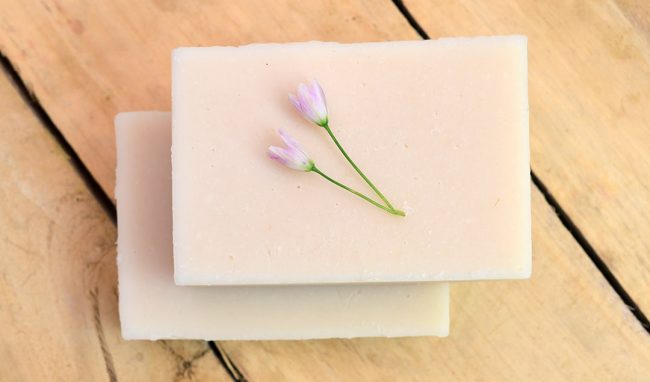
Antioxidants
Preservatives are only used in ‘wet’ products since water creates a habitat where bacteria can grow. Soap does not require preservatives since the water that you use in the recipe will evaporate out. All body care soap recipes are calculated to have more oils in them than can be transformed into soap by the lye. This is called ‘super-fatting,’ and it’s a field that you can control in soap recipe calculators.In superfatting your soap, you can either reserve a specific oil to add at trace, or you can incorporate all the oils together with the lye. You will have a superfat either way, but if you add the oil after trace, there’s a higher chance of it not being saponified. It’s a way for you to choose which oil is the superfat oil, rather than a combination of all of them.The superfat oil will stay in your bars as a conditioning, free-floating oil. Depending on the oil, they also have varying shelf lives, not because they spoil, but because they oxidize and go rancid. It can cause soap to smell bad or to develop ‘Dreaded Orange Spot.’ Orange spots on your soap that sometimes seep with liquid. To combat rancidity, and help soap have a longer shelf-life, soap makers use two main antioxidants. These are completely optional and are unnecessary if your oils and butters are made into soap, and used as soap, well within their original best-by dates.
- Grapefruit Seed Extract (GSE) extracted from the seeds and pulp of grapefruit this thick and clear liquid doesn’t add a scent to your soap and is very effective at keeping other oils from spoiling.
- Rosemary Oleoresin Extract (ROE) extracted from rosemary leaves and quite a thick and strong-smelling herbal liquid.
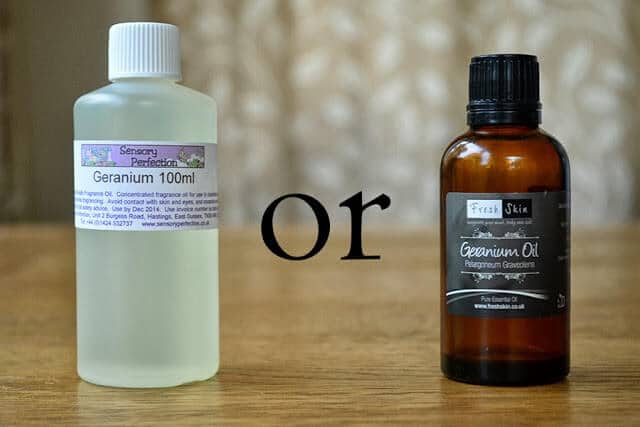
Soap Fragrance
Some people will choose to let their soap scent speak for itself and leave it to smell like simple, clean, handmade soap. Another idea is to use oils like sesame or beeswax in your recipes since they will impart their own unique and natural fragrances. However, the most common way to scent soap is with either essential oils or cosmetic grade fragrance oils.If you prefer the idea of natural scent then stick with essential oils. They’re concentrated plant and flower extracts and come in a fairly extensive range. The downside of using essential oils is their expense and propensity for fading with time. It’s especially problematic for citrus essential oils such as lemon and orange. To learn more about what percentages of essential oils to use in your recipes visit this page.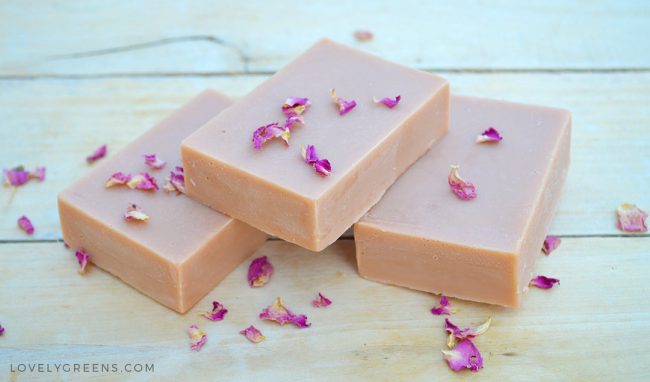
Fragrance oils
Read more: how to draw harry potter stuffFragrance oils are commercially produced perfumes for the toiletry and home industry. They’re relatively inexpensive, have a scent that lasts ages, and have a much more varied range to choose from. If you like baby powder scented soap or a shampoo that smells like coconut then you’ll need to use fragrance oils.Keep in mind that fragrance oils are both synthetic and patent-protected products though. That means that you’ll never truly know all the ingredients used to make them and that they are definitely not natural. In many cases, they can contain petrochemicals and allergens that cause people to sneeze or have skin reactions.Another thing to be aware of is that not all fragrance oils are skin-safe. Many made for the candle and diffuser industry can cause rashes and burns if used on the skin. If you decide to use fragrance oils, always make sure that it’s safe to use. Look on the bottle and ask the supplier for the MSDS (material safety data sheet) if it’s not clear.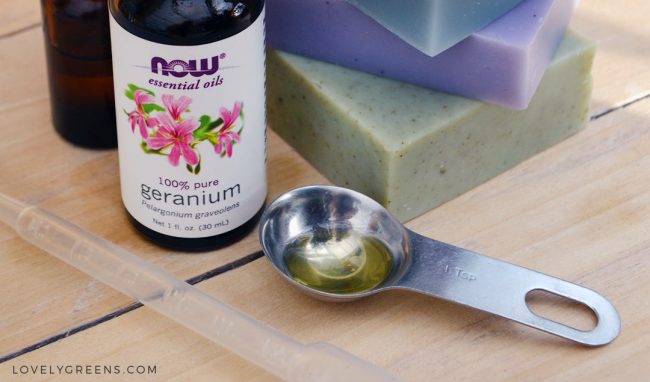
Scent Fixer
Above I mentioned that the scent of essential oils can fade over time but there are ways to ‘fix’ the scent so that they’ll last longer. Sometimes another essential oil can help the others to stick and at other times it’s best to use another additive that works to absorb the essential oils into it.Fixers are a bit more advanced in soap making but I thought I’d add them in so that those experimenting with making nice smelling soap aren’t frustrated by their soap’s scent evaporating during the curing process. Here are some of the choices you’ll come across:
- Arrowroot is an edible white powder used in thickening sauces and gravy. Use as little as a teaspoon in 800g (28oz) batches
- Benzoin is available as both a powder and as an essential oil
- Corn starch is another food thickener that you use as little as a teaspoon in 800g (28oz) soap batches.
- Kaolin clay works similarly to cornstarch and in the same amount. You can use up to a teaspoon per 1-lb soap batches, and many soapers mix it with the essential oils the night before. With clay you need to add 3x its amount in distilled water to disperse it just before you add it at trace.
- Oatmeal is one that I’ve discovered on my own. Using finely blended oatmeal in your soap will add light exfoliation and will absorb and hang onto your essential oils.
- Orris root powder is made from the dried and powdered root of the Iris (Iris germanica) and has a woodsy and violet scent of its own.
- Essential oils – May chang (Litsea cubeba) and base note essential oils such as cedarwood, patchouli, and balsams can ground the other essential oils in the blend.
Soap Colors
In natural soap making you have several options for coloring your soap which will include powders you can purchase from specialty suppliers and even flowers and plants that could be growing in your garden right now. Your other option is to choose oils that will impart a natural hue to your soap. These could include clays, plant extracts, or ingredients that will caramelize and give a warm color to the finished product. Learn more about naturally coloring your soaps
- Some of your base oils, such as olive oil, will impart a more yellow or creamy color. White and/or light-colored oils will create white soap.
- Cosmetic clays can add beautiful natural color to your soap and come in a range of shades including blue, brown, yellow, green, and pink.
- Sugars: milk, sugar, and honey will caramelize if you add them to your batch before trace. They’ll do the same thing if your soaping temperature is warm enough — over 105F in my experience.
- Herbs, Flowers, & Roots: Nature creates all types of wonderful colors useful in soap making. Use calendula petals for golden orange, alkanet root for purples, and madder root for pink.
- Mineral pigments are available in a wide range of colors that can help you hit most of the hues of the rainbow. However, they are considered ‘nature identical’ rather than ‘natural’. These are the same colors used in mineral make-up but are created in a controlled environment, rather than mined from the earth. This is because their natural counterparts are often tainted with dangerous heavy metals, such as arsenic and lead.
- Micas are similar to mineral pigments as they are created in a lab. They’re even less natural, some are made with nature-identical colors and others with dyes. Many micas misbehave in cold-process soap making too and end up colors that they’re not supposed to be.
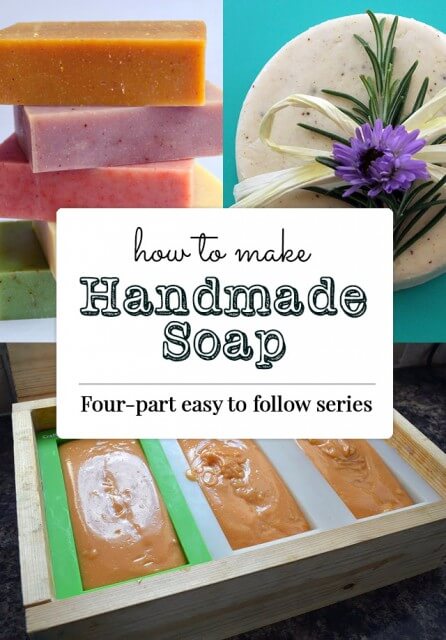
Botanicals
The word botanicals simply means natural fruit, flower, leaf, and root additives that impart either color, visual interest, or exfoliation to your soap. There is some conjecture as to how much of the original properties found in these ingredients survive the soap making process. However, many are useful in adding color, texture, and decoration. Learn more about using botanicals in soap.
- Botanical oils are mainly used in the super-fatting phase and may include rose-hip oil, neem oil, and borage seed oil
- Dried fruit & whole spices – lemon and orange slices, peppercorns, and cinnamon sticks are just some of the items you can add to your soap to create holiday or scent themed designs.
- Powdered spices, such as turmeric powder, can also provide vibrant natural color.
- Exfoliants such as rolled oats, ground almonds, and poppyseeds can all be added at small amounts to create scrubby soap.
- Herbs and flowers can be used to both decorate and tint your soap. Use infusions of flowers and herbs in place of some or all of the water content and feel free to use dried flowers on both the tops and interiors of your soap.
- There are various roots with medicinal value that can be used in soap making. However, the effectiveness of the active ingredients can be questionable in your final product. Alkanet and Madder root are roots used purely for color and tend to be added by infusing liquid oils with the dried root. You can also add a powdered version of the root directly to the soap.
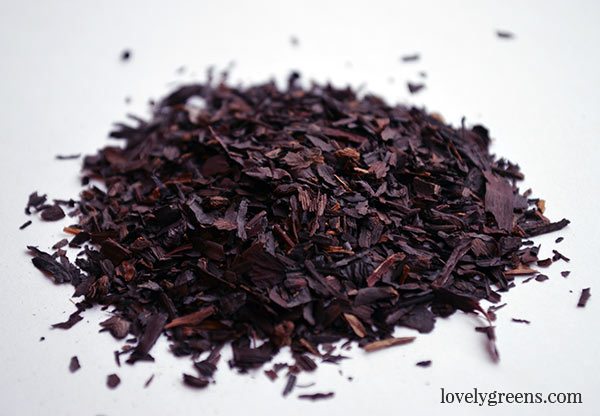
Where to purchase your Soap Making Ingredients
First of all, I encourage you to pop into your local bulk foods wholesaler or cash-and-carry. See what they have on offer since you can often get a much better deal than with specialty soap and beauty suppliers. Always make sure to check the best by date of the oils you’re purchasing. Often times the oil in supermarkets can be close to their expiration date. Using old oil in soap making can lead to a lot of issues from dreaded orange spots to a short shelf-life.I’d like to emphasize is that it’s easy to spend a small fortune when starting out making your own soap. You don’t need much to get started so try to resist purchasing expensive oils and equipment. At least until you’ve made a few batches and know better what you want. For more ideas on where to get soap ingredients head over here.You can continue on to the next three parts of this series through the links below. Have a watch of the below video to see how to make a simple batch of soap.Read more: Coping Quarter Round Trim Moldings | Top Q&A
Natural Soap Making for Beginners Series
Last, Wallx.net sent you details about the topic “Natural Soap Making For Beginners: Ingredients❤️️”.Hope with useful information that the article “Natural Soap Making For Beginners: Ingredients” It will help readers to be more interested in “Natural Soap Making For Beginners: Ingredients [ ❤️️❤️️ ]”.
Posts “Natural Soap Making For Beginners: Ingredients” posted by on 2021-10-26 12:41:06. Thank you for reading the article at wallx.net





